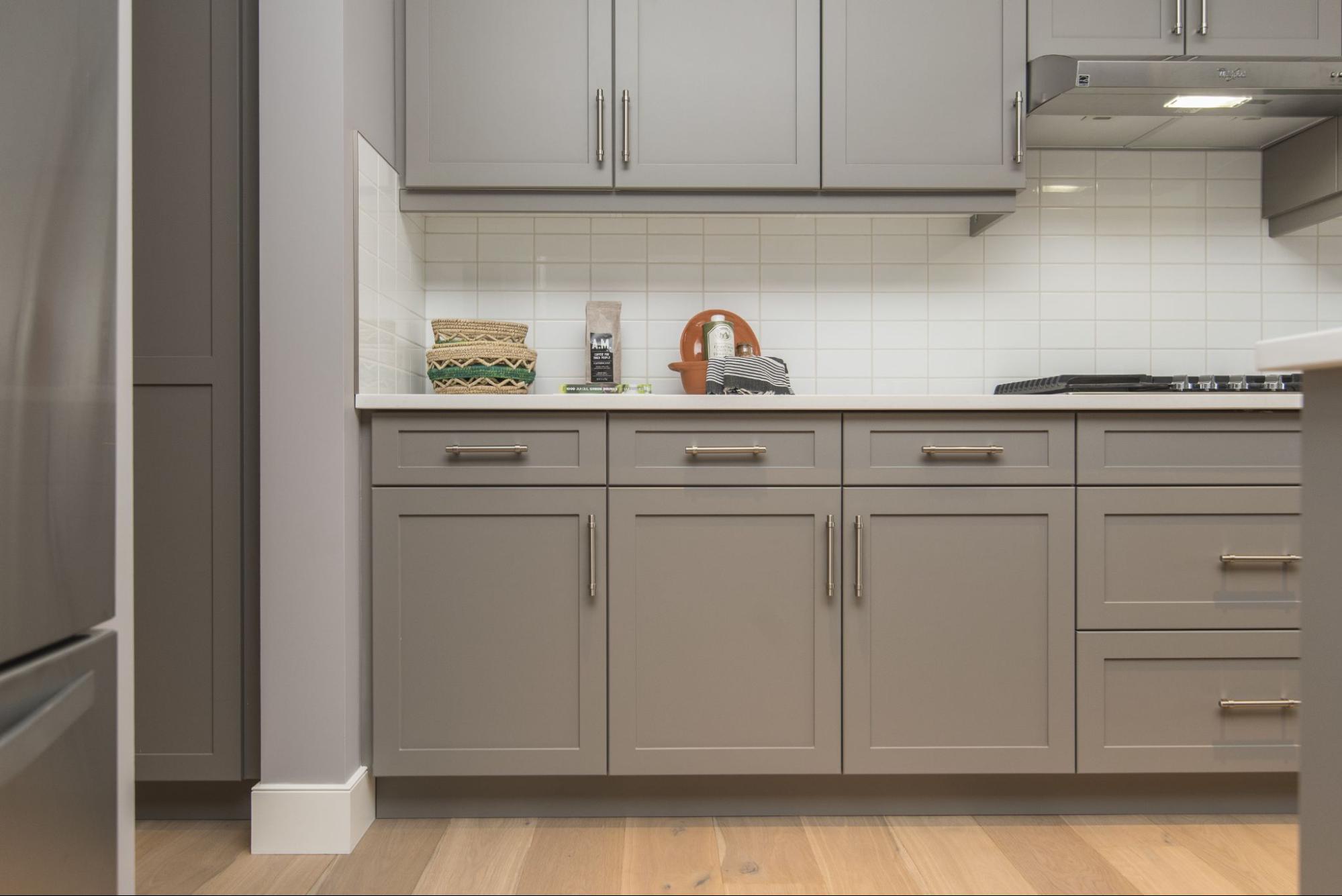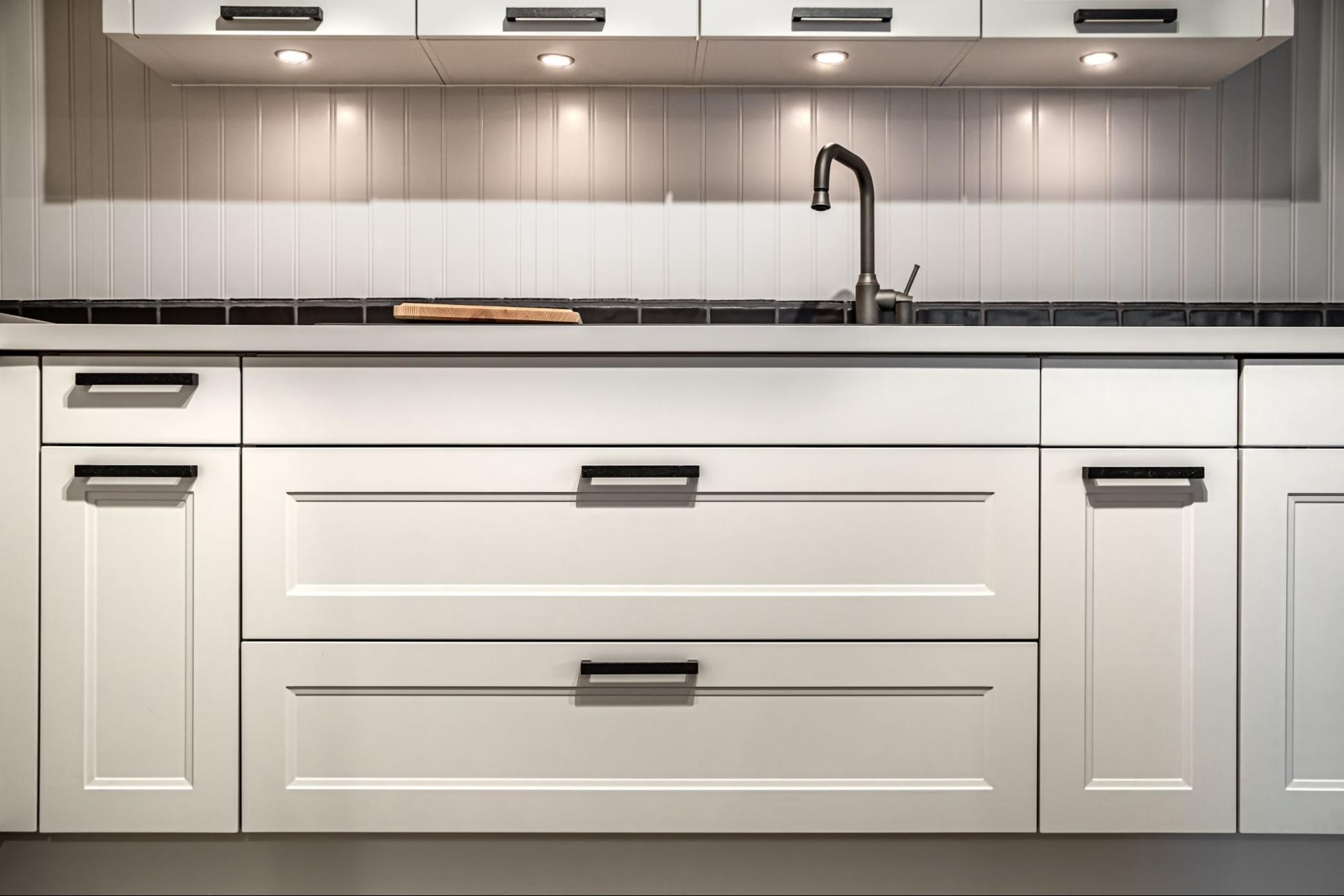Shaker-style cabinet doors have a timeless appeal. They feature a clean, five-piece design with a recessed center panel. Rooted in the craftsmanship of the Shaker community, these doors prioritize functionality and simplicity, making them a popular choice for modern and traditional kitchens. Their versatile design complements different themes by pairing well with sleek hardware for a contemporary look or classic finishes for a rustic touch. Built from durable materials like solid wood, MDF, or plywood, they offer long-lasting quality while remaining easy to maintain.
The Origins and Crafting of Shaker-Style Cabinets
Shaker-style cabinet doors embody a perfect balance of practicality and craftsmanship, characterized by clean lines and minimal ornamentation. Rooted in the traditions of the Shaker community—renowned for their dedication to simplicity and quality—these doors were designed with functionality in mind, rejecting elaborate details in favor of sturdy construction using solid wood and traditional joinery techniques. This meticulous approach resulted in a durable, five-piece structure that has stood the test of time. Their enduring appeal lies in their adaptability, making them a staple in classic and modern interiors. Today, Shaker-style cabinet doors offer homeowners a timeless aesthetic that seamlessly blends durability with understated elegance.
Shaker-Style Cabinet Doors’ Features
Shaker-style cabinet door designs reflect a commitment to efficiency and timeless appeal, ensuring versatility across different home styles. Each element contributes to their practicality, making them a reliable option for kitchens, bathrooms, and storage spaces:
Five-Piece Construction
A frame of two vertical stiles and two horizontal rails encloses a recessed center panel. This structure enhances durability while maintaining a lightweight feel. The design allows for wood expansion and contraction, reducing the risk of cracks. Its simple yet sturdy build makes it a long-lasting choice for various interiors.
Flat-Recessed Center Panel
The center panel sits lower than the surrounding frame, creating a subtle depth effect. Unlike raised panel designs, this feature enhances the minimalist aesthetic of Shaker-style cabinets. The flat surface also makes cleaning easier, reducing the accumulation of dust and grime. Its unembellished look allows for easy integration into both modern and traditional spaces.
Minimalist Aesthetic
Ornamentation remains absent, with the focus placed on craftsmanship and material quality. The absence of intricate carvings or decorative moldings enhances the versatility of these doors. This simplicity allows them to pair effortlessly with various hardware styles, from vintage knobs to sleek bar handles. Their understated elegance ensures they complement a wide range of interior themes.
Versatile Material Options
Traditional versions use hardwoods like maple, cherry, and oak, while modern variations incorporate MDF or plywood for affordability. Each material choice affects durability, cost, and overall appearance. Stained finishes highlight the natural wood grain, while painted options provide a contemporary touch. These material choices allow homeowners to customize their cabinets to fit specific design preferences.
Materials Commonly Used for Shaker Cabinet Doors
Shaker-style cabinet doors are crafted using various materials that influence durability, cost, and appearance. Traditional solid wood remains popular, while engineered materials offer budget-friendly alternatives without compromising style. Each material choice affects how the cabinet doors handle wear, moisture, and long-term maintenance:
Solid Wood
Hardwoods like maple, oak, and cherry provide exceptional durability and a natural grain pattern. Strength and resilience make them ideal for high-traffic areas, ensuring long-lasting performance. Staining enhances the wood’s natural beauty, while painting provides a smooth, customizable finish. Maintenance requires occasional refinishing to preserve the original look and protect against moisture.
Medium-Density Fiberboard (MDF)
A smooth and uniform surface makes MDF an excellent choice for painted Shaker cabinet doors. Composed of compressed wood fibers and resin, it resists warping and cracking better than solid wood. Affordability and versatility contribute to its popularity in modern kitchens. Moisture resistance depends on the quality of the sealant or paint applied to the surface.
Plywood
Thin layers of wood veneer are glued together to form a stable and lightweight panel. Its resistance to warping makes plywood a practical option for humid environments like kitchens and bathrooms. Veneered plywood can mimic the appearance of solid wood while remaining more affordable. Its strength and durability ensure it holds up well over years of use.
Laminate
A synthetic coating applied over particleboard or MDF creates a durable, low-maintenance surface. Scratches, stains, and moisture pose minimal threats due to the protective outer layer. Various colors and patterns replicate the look of wood or modern finishes. Cleaning requires only mild soap and water, making it a convenient choice for busy households.
How Shaker-Style Cabinet Doors Are Made
Shaker cabinet doors follow a straightforward construction process that ensures durability and precision. Careful material selection, precise cutting, and expert assembly contribute to their timeless design. Each step plays a role in maintaining the signature clean lines and sturdy structure that define this style:
Material Selection
Choosing high-quality wood or engineered materials determines the durability and appearance of the final product. Hardwoods like maple and oak offer strength, while MDF provides a smooth surface for painted finishes. Moisture resistance and grain consistency influence the choice based on the intended use. A properly selected material enhances longevity and reduces maintenance needs.
Cutting and Shaping
Each component is measured and cut to achieve the signature five-piece construction. Stiles, rails, and center panels are shaped using precision tools to ensure seamless assembly. Edges are sanded smooth to eliminate rough spots and enhance the finish. Consistency in measurements ensures uniformity across multiple cabinet doors.
Assembling the Frame
Stiles and rails are joined to form a sturdy frame around the recessed center panel. Traditional woodworking techniques like mortise and tenon or pocket hole joinery provide structural integrity. A secure fit ensures the door remains stable under daily use. Clamps hold the pieces in place until the adhesive sets, preventing misalignment.
Finishing and Sealing
Sanding smooths out any imperfections, preparing the surface for staining or painting. A primer may enhance adhesion before the final coat is added. Sealing protects the wood from moisture, stains, and wear, extending the cabinet’s lifespan. A proper finish enhances the cabinet’s aesthetic while maintaining its durability.

Shaker-Style Cabinet Doors vs. Other Styles
Shaker-style cabinet doors stand out for their simplicity, but other styles offer distinct design elements that cater to different aesthetics. Raised panel, slab, and beadboard cabinet doors have unique characteristics that impact appearance, functionality, and maintenance. Comparing these styles helps determine which fits specific interior preferences and practical needs:
Shaker vs. Raised Panel
Raised panel doors feature a decorative center panel that adds depth and elegance. The intricate detailing benefits traditional and formal spaces, making them a preferred choice for classic interiors. Cleaning takes more effort due to the grooves and edges that can trap dust. Shaker doors offer a simpler, low-maintenance alternative with a minimalist appeal.
Shaker vs. Slab
A flat, single-piece design gives slab cabinet doors a sleek and modern appearance. The absence of frames or recessed panels creates a smooth, uninterrupted surface. Contemporary kitchens often favor this style for its seamless look and easy maintenance. Shaker doors provide a more transitional option, blending well with classic and modern interiors.
Shaker vs. Beadboard
Vertical grooves define beadboard cabinet doors, adding texture and a cottage-style charm. This design works well in farmhouses and coastal kitchens, enhancing a rustic aesthetic. Dust and grime can accumulate in the grooves, requiring regular cleaning to maintain the look. Shaker doors offer a cleaner, more versatile alternative with a timeless structure.
Why Homeowners Choose Shaker-Style Cabinet Doors
Shaker-style cabinet doors remain a top choice for homeowners due to their versatility, durability, and timeless appeal. Their simple design adapts to various interior themes, making them a practical investment for kitchens and other living spaces. Functionality and ease of maintenance add to their appeal, ensuring long-term satisfaction.
Timeless and Versatile Design
Clean lines and a minimalist structure allow Shaker doors to complement both modern and traditional interiors. Neutral colors and wood finishes enhance their adaptability, making them suitable for various décor styles. Hardware choices, such as sleek handles or classic knobs, further customize their appearance. A well-balanced aesthetic ensures they remain stylish despite changing trends.
Durable Construction
Solid wood and engineered materials provide strength and resistance to daily wear. Sturdy frame construction prevents warping, ensuring longevity in high-traffic areas. High-quality joinery techniques contribute to structural stability, keeping doors intact over the years. A well-built Shaker cabinet door withstands moisture, temperature changes, and frequent use.
Easy Maintenance
A smooth, recessed panel design minimizes areas where dust and grime can accumulate. Cleaning requires only a damp cloth and mild detergent, making upkeep simple. Painted or stained finishes protect the surface from stains and scratches, reducing the need for frequent refinishing. A low-maintenance structure ensures cabinets stay in excellent condition with minimal effort.
Customizable Finishes and Hardware
Painted options in white, gray, and bold colors offer flexibility in matching different kitchen themes. Stained finishes showcase natural wood grain, adding warmth to the overall design. Matte, glossy, or distressed treatments further personalize the final look. Various hardware options, including vintage, industrial, or modern styles, enhance the cabinet’s overall appeal.

Explore Shaker-Style Cabinet Doors for Your Next Project
Shaker-style cabinet doors balance simplicity, durability, and versatility, making them an excellent choice for any renovation or remodeling project. Their timeless appeal fits seamlessly into modern, classic, or transitional interiors while offering customization through finishes and hardware. Durable materials and easy maintenance ensure they remain a practical investment for years. Shaker-style cabinets enhance functionality and aesthetics, creating a refined and inviting space.
Check out the North American Cabinet LLC blog for insights on materials, styles, and finishes to learn why shaker-style cabinet doors are a top choice.

